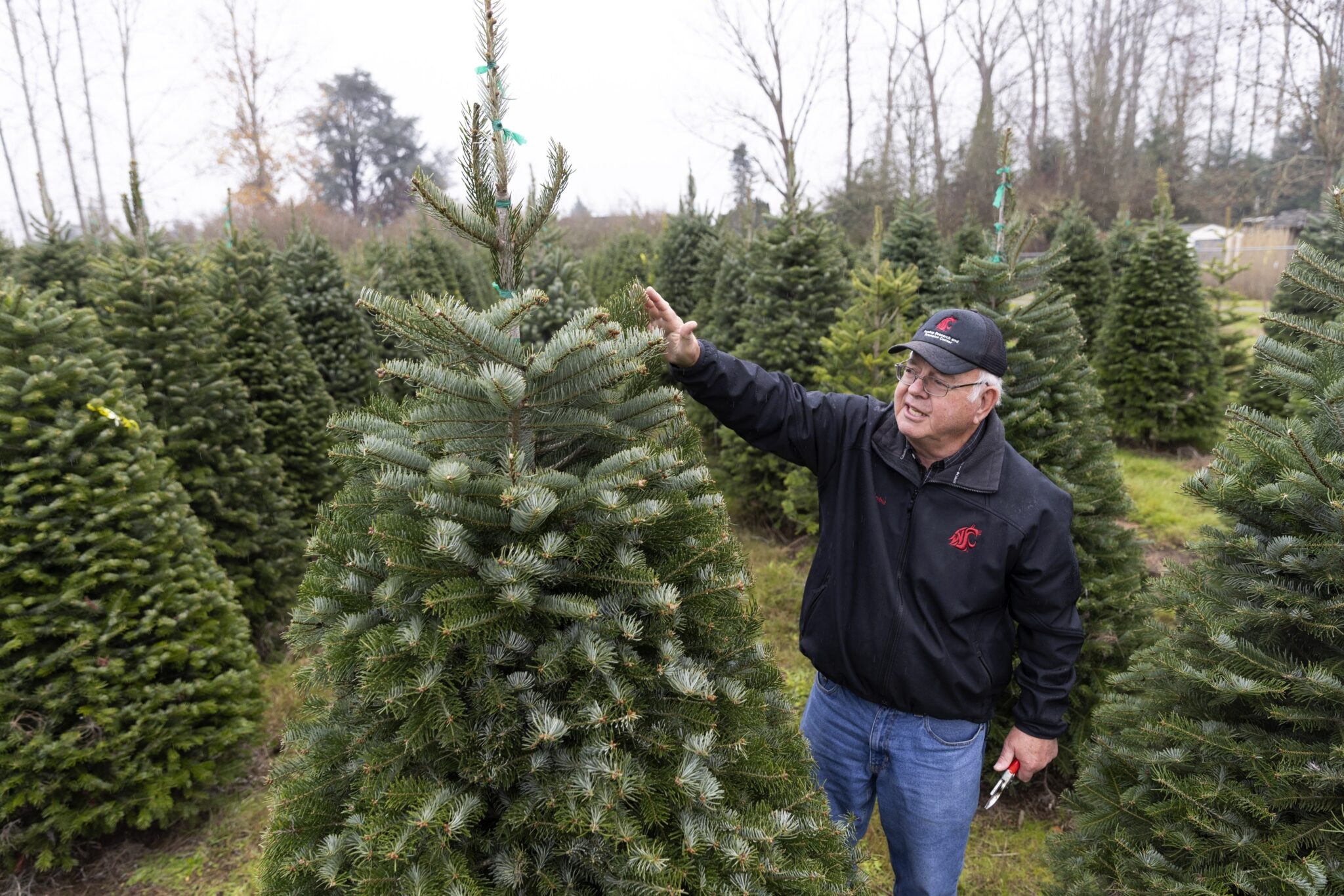Gary Chastagner, a Washington State University professor called “Dr. Christmas Tree” (Courtesy: AP Photo/Jason Redmond)
Christmas tree breeder Jim Rockis knows what it looks like when one dies long before it can reach a buyer.
Rockis farms trees in West Virginia and Pennsylvania, where he and other producers often grow their iconic evergreens outside their preferred habitat higher in the mountains. But that can mean planting in soil that’s warmer and wetter — places where a nasty fungal disease called Phytophthora root rot can take hold, sucking moisture away from saplings and causing needles to crisp to burnt orange.
“After a while, it just gets to the core of it,” Rockis said. “They just wither away.”
Christmas tree growers and breeders have long prepared for a future of hotter weather that will change soil conditions, too. People buying trees may not have noticed a difference in availability this year and may not even in the next couple; the average Christmas tree takes eight to 10 years to reach marketable size.
But that means the trees being grown right now are the beloved holiday traditions of tomorrow for millions of families.
“You’ve got to start thinking about how you are going to adapt to this,” Rockis said.
That’s why researchers like Gary Chastagner, a Washington State University professor called “Dr. Christmas Tree” for his decades of work on firs and other festive species, have been working with breeders like Rockis to see if species from other parts of the world — for instance, Turkish fir — are better adapted to conditions being wrought by climate change.
In the past two years, surprisingly high numbers of evergreens died of fungal disease outbreaks in Washington and Oregon. Chastagner has been concerned that changing soil temperature and moisture “may change the frequency at which we would see some Phytophthora that are more adapted to warmer soil conditions.” Some may attack trees even more aggressively, he added.
Chastagner and his team are doing more sampling work to understand the causes of these outbreaks and whether they represent a pattern that could extend into the future.
But some scientists say there isn’t enough research on warming soil temperatures that could affect Christmas trees and many other crops, especially trees.
Go read the rest. Not very jolly, I’m afraid, but this is where we are.

